Polar regions are mystical, aren’t they? These chilly realms boast some of the most stunning and resilient creatures known to people. Their ability to thrive in such harsh environments is a testament to the wonders of nature. From fluffy coats to powerful strides, each of these animals exudes a beauty that is indeed epic. So, let’s delve into the icy wonderland and meet 12 polar animals whose beauty will leave you in awe.
1. Arctic Fox
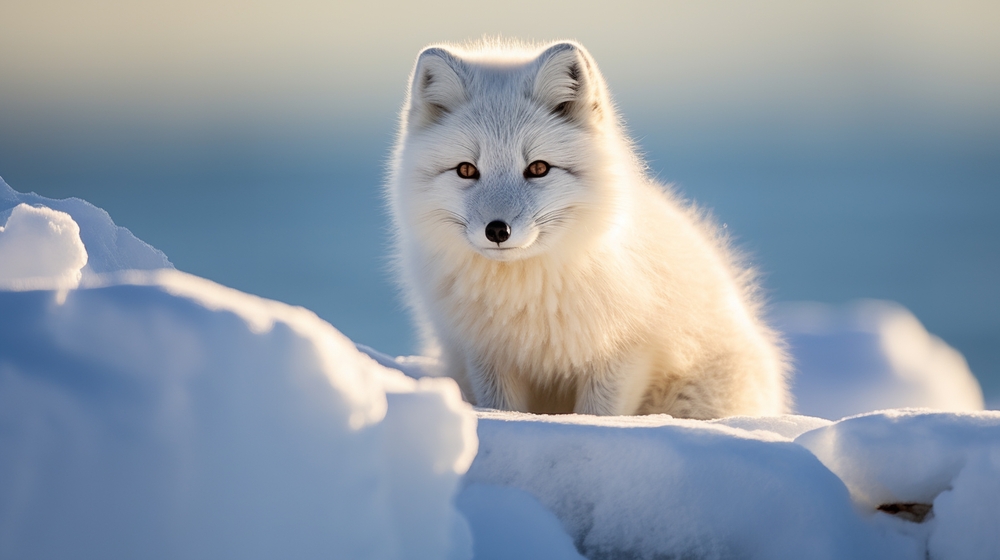
The Arctic fox is a true testament to Mother Nature’s brilliance. With its pristine white fur, it blends seamlessly into the snowy landscape, making it a master of disguise. This stunning creature is more than just a beautiful face, though. According to National Geographic, it’s an agile hunter, capable of surviving the extreme cold by relying on its resourcefulness and adaptability. In the summer, its coat changes to a brown or gray, providing perfect camouflage against the tundra’s earthy tones.
But let’s talk about that floofy tail, which is not just for show. The tail acts like a warm blanket, wrapping around the fox during freezing nights. Its small size and furry paws help minimize heat loss, and it can hear the faintest sounds of prey under the snow. Watching an Arctic fox in action is like witnessing a live magic trick, one where nature has crafted the most elegant performer. It’s such a delight to see how they leap and pounce on their unsuspecting prey with such grace and precision.
2. Emperor Penguin
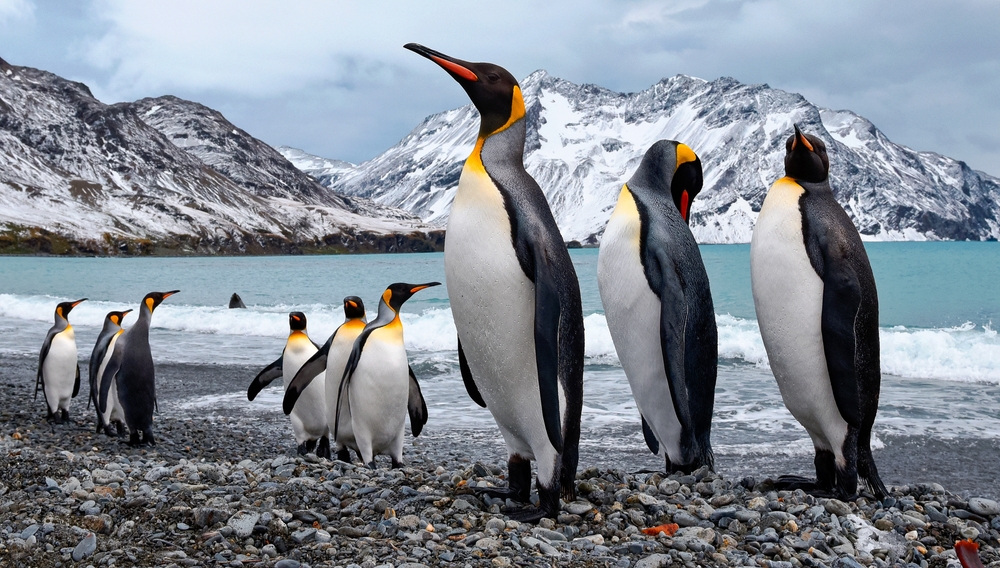
The emperor penguin is royalty in the icy realms, and it’s not just because of its name. These birds exude a regal air, standing tall and proud against the stark Antarctic backdrop. Their striking black and white coloration is accentuated by a splash of yellow on their necks, adding a vibrant touch to their otherwise monochrome palette. With their distinctive waddle and communal huddling, they are a picture of both unity and resilience. According to Oceania, their synchronized dives and underwater agility showcase their exceptional adaptation to life in the harsh Antarctic.
Emperor penguins are exceptional parents, and their dedication is heartwarming. The males endure the freezing winter, incubating the eggs by balancing them on their feet, sheltered under a flap of skin. Meanwhile, the females brave the icy waters, returning with food once the chicks hatch. Their synchronized movements in the water showcase their grace and efficiency as swimmers. Watching them dive and glide is akin to witnessing an underwater ballet, an elegant performance in the heart of the Antarctic.
3. Polar Bear
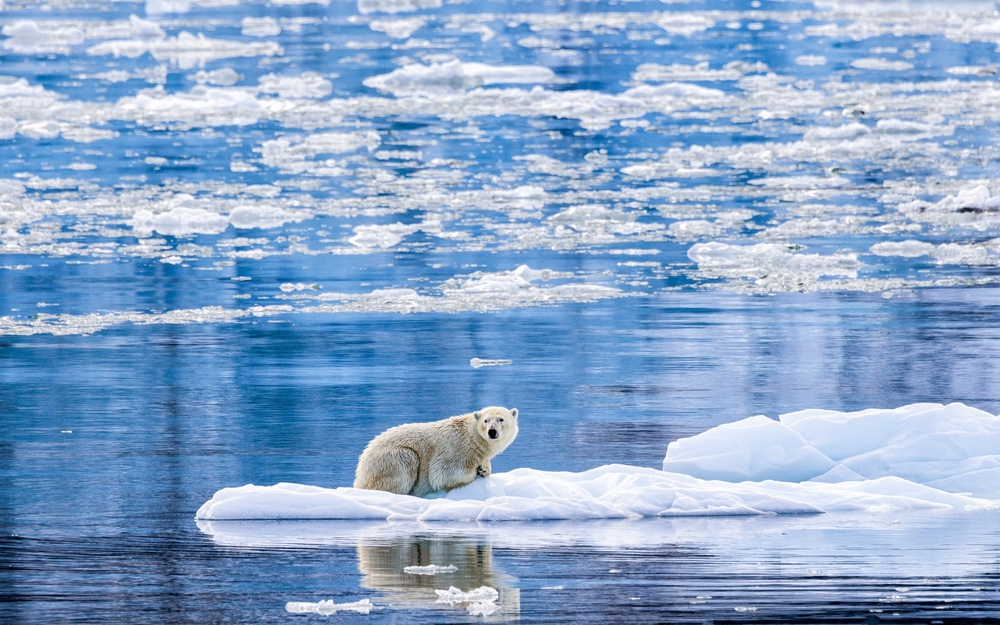
Polar bears are the giants of the Arctic, and their beauty is as mesmerizing as their size is intimidating. With their thick, creamy fur and piercing eyes, they command attention and respect. These majestic creatures are formidable hunters, relying on their strength and stealth to catch seals on the ice. Their massive paws act like snowshoes, spreading their weight and preventing them from sinking into the snow. Yet, despite their size and power, there is a gentleness in their gaze, a quiet elegance in their demeanor.
Polar bears are also excellent swimmers, often traversing vast distances in search of food. They can hold their breath for minutes, gliding silently beneath the icy waters. Watching a polar bear in its natural habitat is a reminder of the wild, untamed beauty of the Arctic. Their survival is intricately tied to the ice, making them symbols of the pressing challenges of climate change. It’s hard not to be captivated by their presence, a blend of raw power and serene beauty.
4. Narwhal
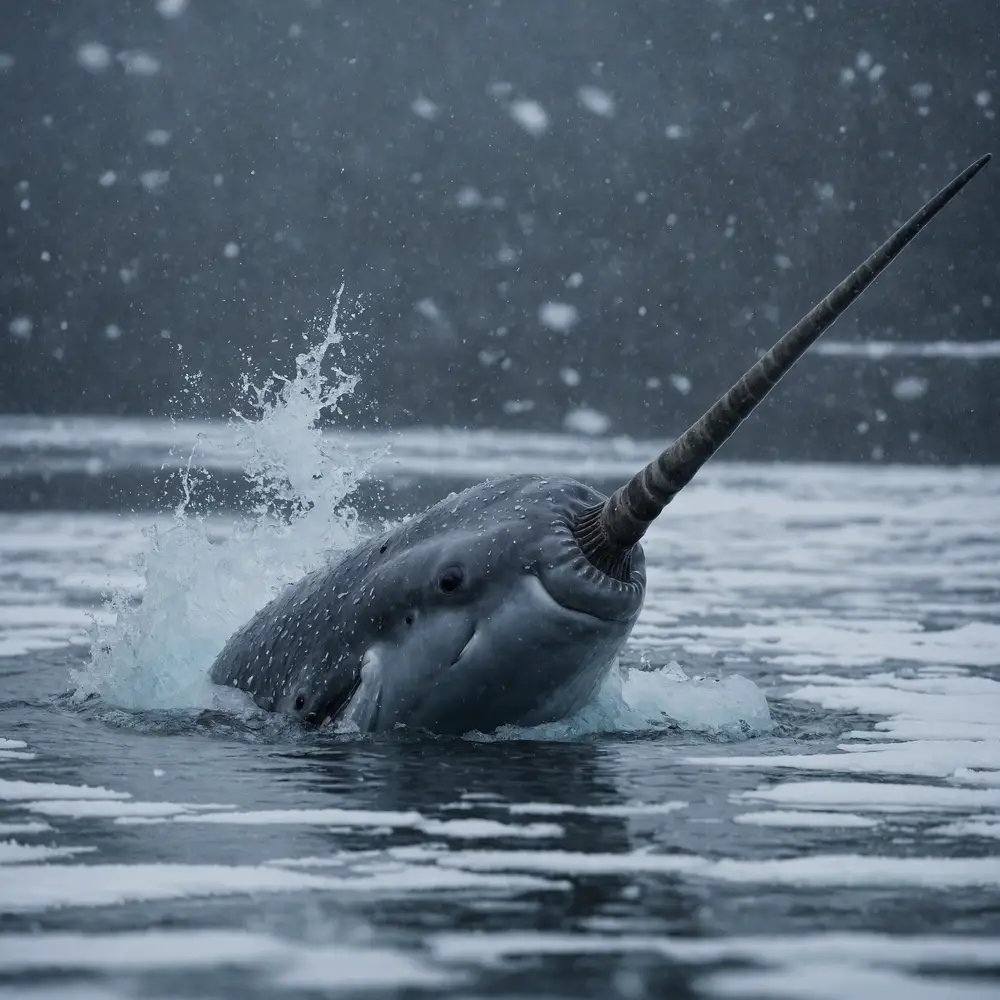
Often dubbed the “unicorn of the sea,” the narwhal is as enchanting as it sounds. Its most distinguishing feature is its long, spiral tusk, which is actually an elongated tooth. This curious appendage can grow up to ten feet long and adds a whimsical touch to the narwhal’s sleek body. These mysterious creatures glide gracefully through the Arctic waters, their tusks leading the way like a knight’s lance. There’s something almost mythical about their silent passage through the icy depths.
The narwhal’s social behavior is as fascinating as its appearance. They often travel in groups called pods, and their interactions speak of a complex social structure. Scientists believe the tusk may play a role in mating rituals or as a sensory organ. Observing narwhals in the wild is a rare and magical experience, one where reality blurs with fantasy. Their presence in the Arctic reminds us of the hidden wonders lurking beneath the ocean’s surface, waiting to be discovered.
5. Snowy Owl
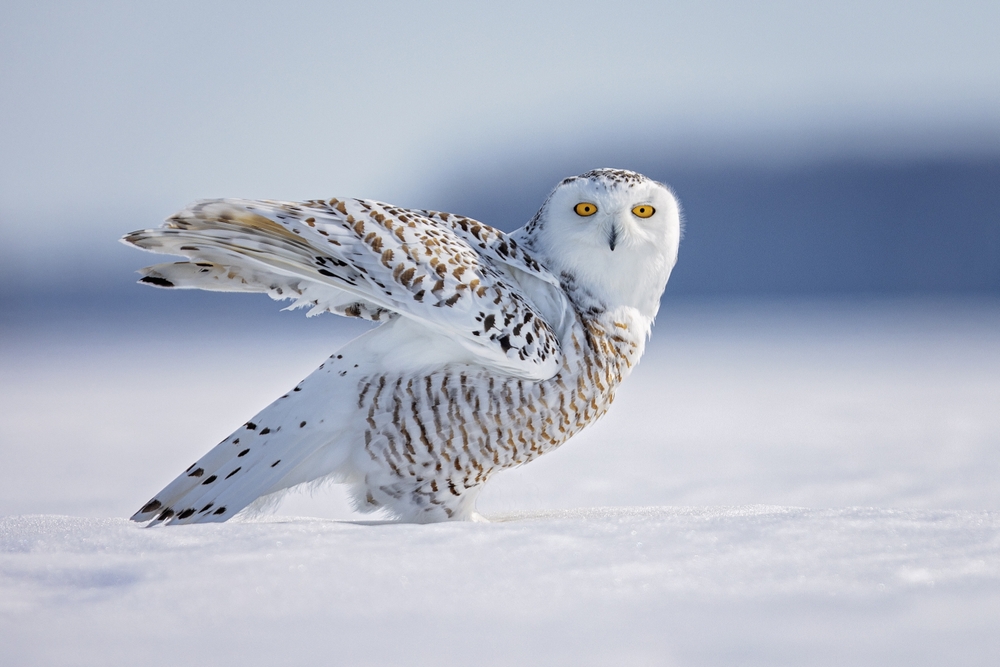
The snowy owl is a vision of elegance perched atop the Arctic tundra. With its striking white plumage dotted with subtle black spots, it is perfectly adapted to its snowy surroundings. Those large, piercing yellow eyes are not just for show; they are keen tools for hunting in the dim Arctic light. The wingspan of a snowy owl is impressive, allowing it to glide silently and effortlessly through the air. This majestic bird is a symbol of wisdom and mystique, often featured in folklore and literature.
Snowy owls are skilled hunters, preying on lemmings and other small mammals. They have a unique hunting style, often scanning the landscape from a perch before swooping down on their prey. Their silent flight is a marvel, a result of specially adapted feathers that muffle sound. Watching a snowy owl in flight is akin to witnessing a ghostly apparition, a fleeting moment of beauty in the Arctic expanse. Their patient and solitary nature only adds to their allure, making them iconic figures of the polar wilderness.
6. Walrus
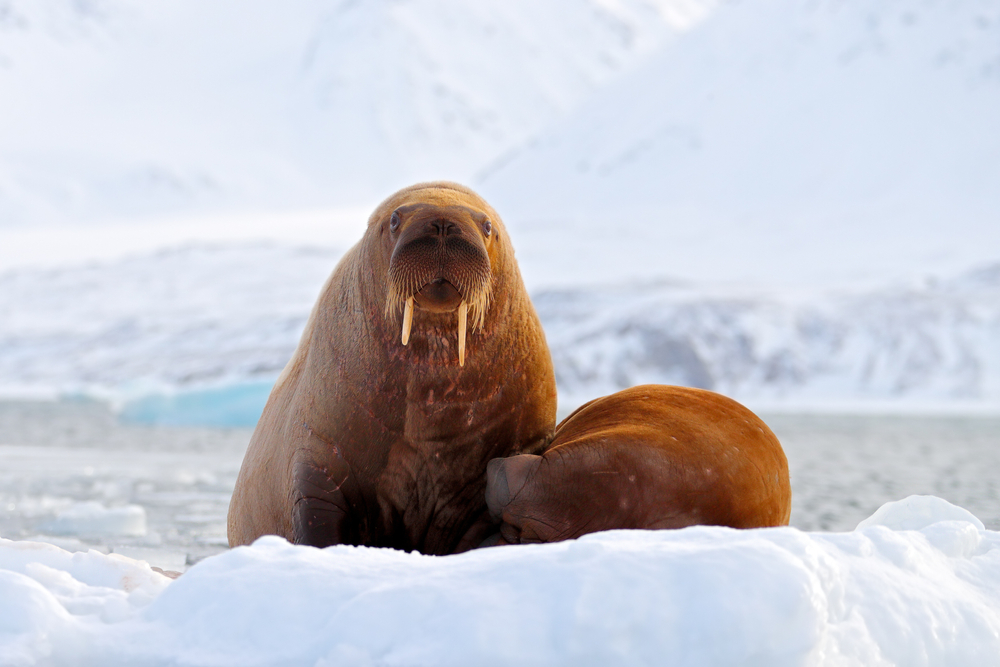
Walruses are the gentle giants of the Arctic, their sheer size and distinctive tusks making them unmistakable. These social animals are often seen lounging in large groups on ice floes, a sight that is both amusing and fascinating. Their wrinkled skin and bristly whiskers give them a rugged charm, while their massive bodies tell tales of strength and endurance. Walrus tusks, which are elongated canine teeth, can grow up to three feet long and are used for a variety of purposes, from breaking ice to aiding in hauling their hefty bodies out of the water. Despite their bulk, walruses are surprisingly agile swimmers.
In the water, they can hold their breath and dive to impressive depths in search of food. These herbivores primarily feed on clams and mollusks, using their sensitive whiskers to detect prey on the ocean floor. The sight of a walrus emerging from the water, water cascading off its back, is a testament to the raw beauty of nature. Their social interactions, from playful sparring to tender moments between mothers and calves, are heartwarming to witness. They remind us that even in the harshest environments, life flourishes in the most extraordinary ways.
7. Beluga Whale
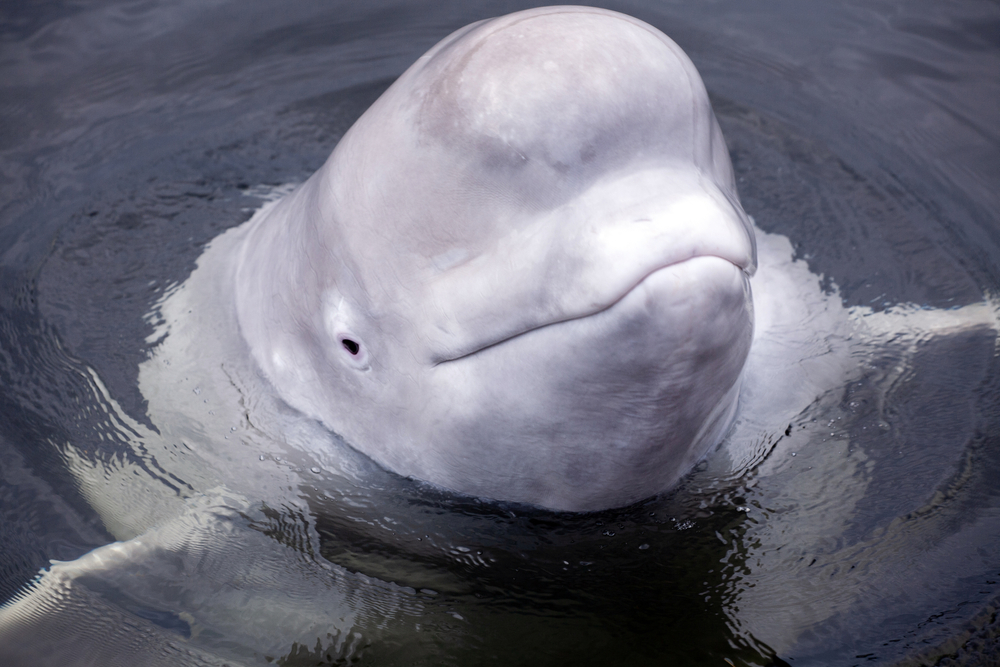
Beluga whales are often called the “canaries of the sea” due to their high-pitched vocalizations. These vocal talents are complemented by their striking white coloration, making them stand out in the dark Arctic waters. With their bulbous foreheads and gentle curves, belugas have an almost playful appearance. They are highly social animals, often traveling in pods and known for their friendly interactions with humans. Their curious nature and ability to mimic sounds add to their charm and allure.
In the wild, beluga whales are known for their acrobatic displays, leaping and twisting in the water with surprising agility. Their social bonds are strong, and they often engage in sophisticated communication and cooperative behaviors. Watching a pod of belugas is like witnessing a community at play, a harmonious dance of white shadows against the deep blue sea. Their adaptability is remarkable, thriving in both arctic and subarctic environments. These “smiling” whales remind us of the intelligent and sentient beings that inhabit our oceans, each unique and irreplaceable.
8. Reindeer
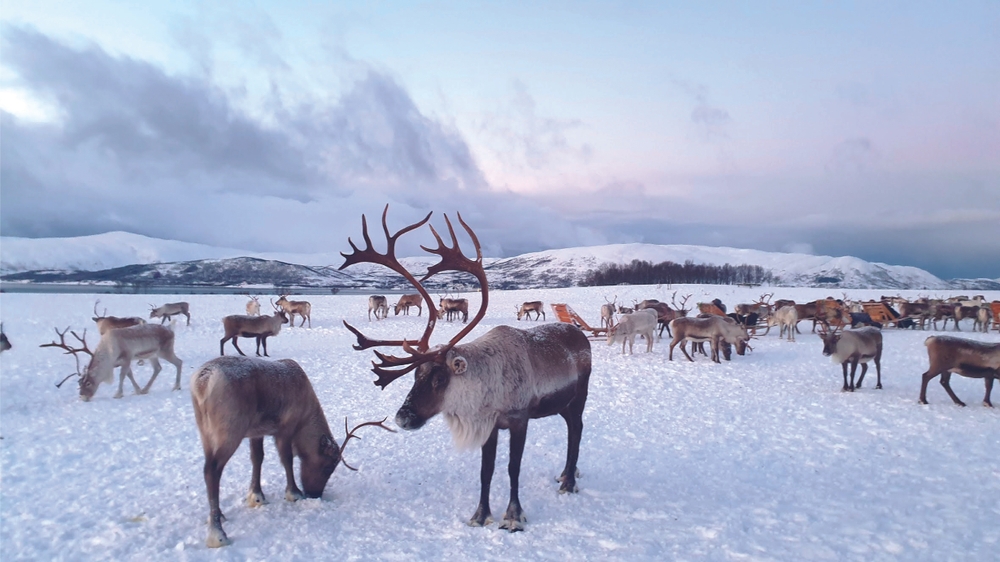
Reindeer, also known as caribou in North America, are synonymous with the snowy landscapes of the polar regions. Their antlers are nothing short of spectacular, with intricate branches that grow anew each year. These majestic animals are built for the cold, with thick coats that provide insulation against the frigid temperatures. Their wide hooves are perfect for traversing snow and soft tundra, preventing them from sinking as they wander the vast landscapes. Reindeer migrations are one of nature’s great spectacles, a breathtaking journey across the Arctic tundra.
In the wild, reindeer are always on the move, following the seasonal changes in search of food. Their diet primarily consists of lichens, which they skillfully dig out from under the snow. These herbivores are social creatures, often traveling in herds that can number in the thousands. Observing a herd in motion is a sight to behold, a synchronized dance of grace and endurance. They are a poignant symbol of survival, embodying the spirit of the polar wilderness with their resilience and beauty.
9. Harp Seal
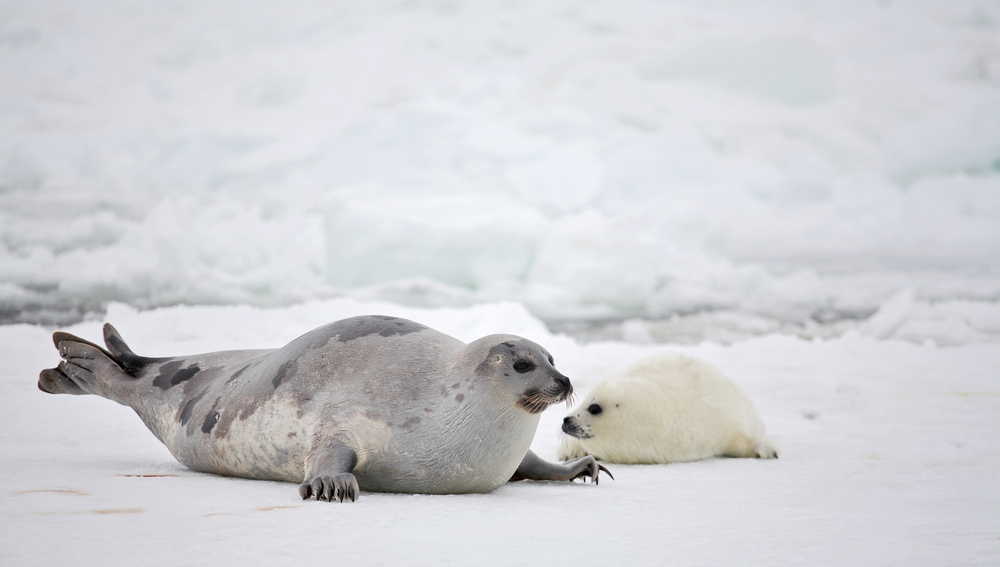
Harp seals are the epitome of cuteness, especially their fluffy white pups that captivate hearts worldwide. These adorable creatures rely on their thick fur for warmth during the early weeks of their life on the ice. As they mature, their coats transform into a striking pattern of silvery-grey with a distinctive harp-shaped marking on their back. Adult harp seals are agile swimmers, capable of diving to great depths in pursuit of fish and crustaceans. Their large, soulful eyes and sleek bodies are a testament to the elegance of marine life.
On the ice, harp seals exhibit a playful demeanor, often seen lounging in groups or engaging in mock battles. They are vocal animals, using a range of sounds to communicate with one another. The sight of a mother seal tending to her pup is heartwarming, a tender moment amidst the harshness of their environment. Watching them slide across the ice or dive into the ocean is a reminder of the joy and playfulness inherent in nature. These seals, with their endearing qualities, are a beloved presence in the polar regions, embodying both beauty and resilience.
10. Musk Ox
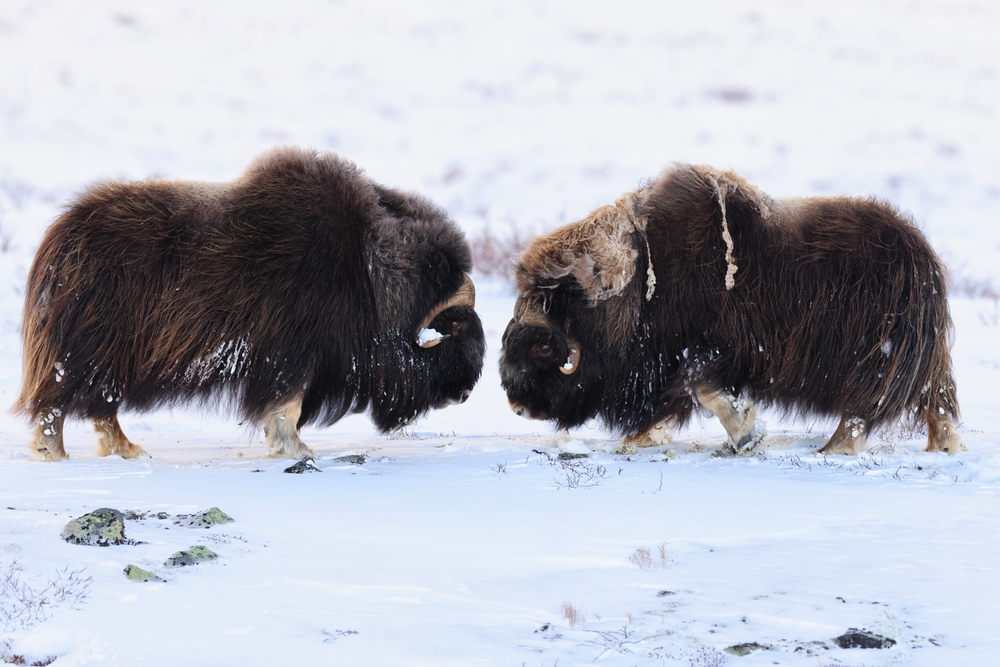
Musk oxen are the rugged warriors of the Arctic, with their shaggy coats and sturdy build. Their thick fur, known as qiviut, is incredibly warm and prized for its softness and insulation properties. These majestic animals have an ancient lineage, roaming the tundra since the Ice Age. Despite their formidable appearance, musk oxen are herbivores, grazing on grasses and shrubs. They are known for their unique defense strategy, forming a protective circle around their young when threatened by predators.
In the wild, musk oxen are a symbol of endurance, surviving in one of the planet’s harshest climates. Their interactions are mostly peaceful, with occasional head-butting contests between males during the mating season. Observing a herd of musk oxen is like stepping back in time, witnessing a living relic of prehistoric days. Their massive horns and powerful presence are awe-inspiring, a testament to the adaptability of life in the Arctic. These animals epitomize the raw, untamed beauty of the polar wilderness, a reminder of the strength and resilience found in nature.
11. Arctic Hare
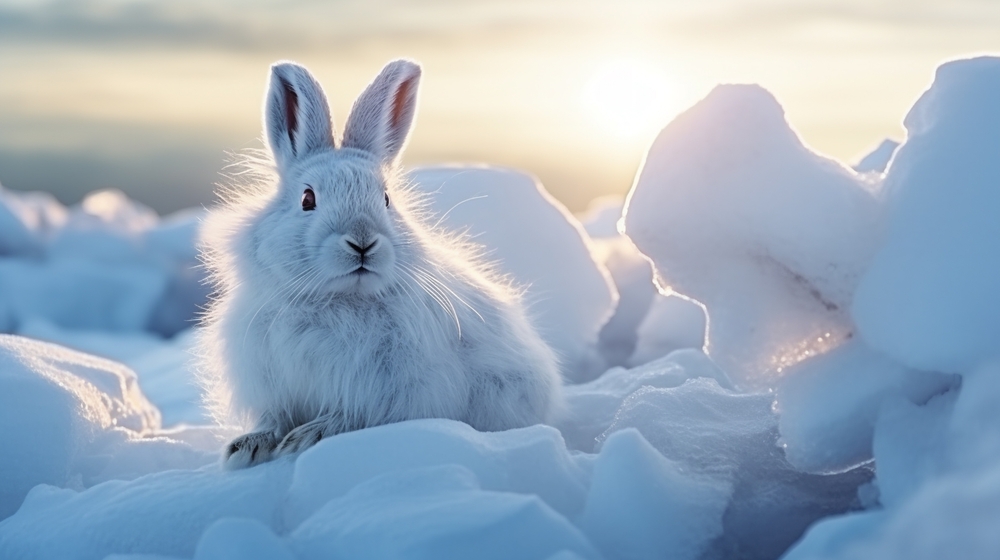
The Arctic hare is a master of camouflage, with its snow-white coat providing perfect concealment in the winter months. As the seasons change, its fur turns a bluish-grey to blend with the rocky tundra. These agile creatures are built for speed, capable of running at impressive speeds to evade predators. With their long legs and powerful hindquarters, they are the sprinters of the Arctic. Their large, furry feet act like snowshoes, preventing them from sinking into the snow as they bound across the landscape.
Arctic hares are also social animals, often forming groups to increase their chances of survival. They primarily feed on woody plants, mosses, and lichens, foraging in the sparse tundra vegetation. Watching an Arctic hare in motion is a testament to the beauty of adaptation, a creature finely tuned to its environment. Their playful behavior and swift movements bring a touch of liveliness to the otherwise stark landscape. Their presence in the Arctic is a symbol of the delicate balance of life, where every creature plays a vital role in the ecosystem.
12. Puffin
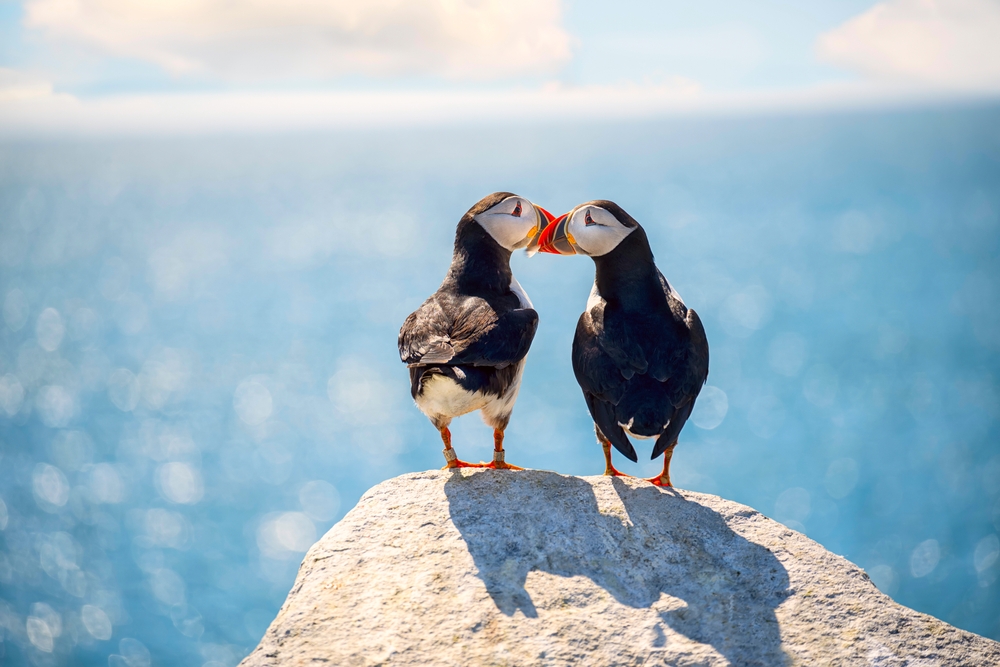
Puffins are the colorful clowns of the Arctic, with their vibrant beaks and striking black and white plumage. These charming birds are excellent swimmers, using their wings to ‘fly’ underwater in pursuit of fish. On land, they are equally fascinating, often nesting in burrows on steep cliffs. Their curious expressions and comical antics make them a favorite among wildlife enthusiasts. The puffin’s ability to thrive in such a harsh environment is a testament to its adaptability and resilience.
During the breeding season, puffins are a sight to behold, with their beaks turning a bright orange hue. This seasonal change adds to their striking appearance, making them one of the most photogenic birds in the polar regions. Despite their clumsy gait on land, puffins are agile and efficient in the air, capable of swift and precise flight. Observing a colony of puffins is a lively affair, filled with the chatter and activity of these social birds. Their resilience and vibrant presence bring a splash of color to the icy realms, reminding us of the beauty and diversity of life in the Arctic.
